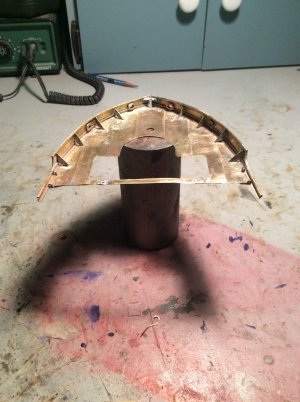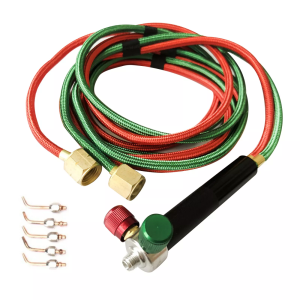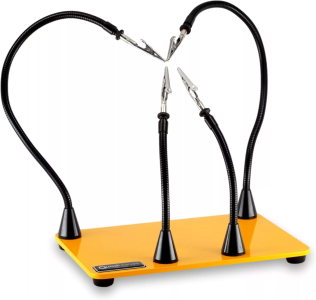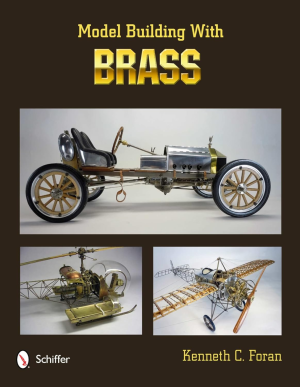I am building a model of a steel hulled freighter. At 1:96 scale, the only thing to use for building parts at this scale is brass; especially brass sheet, and this needs to be soldered. Photo below. Yes it’s witchcraft, but once you figure it out it’s not difficult. I suspect that what works is highly dependent on work habits which differ from person to person but here’s how I do it.
I use an electric soldering iron. I have owned two cordless ones and while they can work surprisingly well, they are expensive junk. I now use one of three regular irons that plug into a wall socket, not a soldering gun, a 15 watt, a 25 watt, and a 40 watt. None are variable temperature. Most of the time the 40 watt is required.
It is important to keep the soldering iron tip tinned. This is a thin coating of solder that remains on the tip. Tinning compound is available from usual sources. A small can lasts a long time.
I only use soft solder. The original soft solder is a lead tin alloy. I prefer an alloy not containing lead and a number of silver alloy soft solders are available today. Note: These are different from the true Silver Solders or Hard Solders that require use of a torch. Solders are available in different diameters. Use the smallest one that will work. My favorite is a 1/32” diameter silver alloy solder. I personally have not had good luck with the soldering pastes.
In addition to the solder’s rosin core, I apply a liquid, not a paste flux, with a tiny brush. This is a water thin clear liquid that flows into the joint and seems to pull the hot solder in. The old fashioned name is Bakers Fluid.
I use ordinary sandpaper, to clean the surfaces to be soldered. The little emory boards for fingernails are good for this. All of the dull oxide need s to be removed. If I remember I’ll dunk the part in a bottle of acetone that I keep on my workbench but I suspect that the flux is aggressive enough for.nthis to be unnecessary.
I solder with a HOT iron. While this might. See my to be counterintuitive heat transfer is time dependent. By quickly soldering the joint you minimize transfer of heat to places that you don’t want to get hot. Another effective technique is to put a blob of solder and then apply this hot metal to the joint. In some cases, this seems to work better than first heating the joint.
And finally, the ideal tool for, removing unwanted solder is my Proxxon pencil engraver.
Roger













